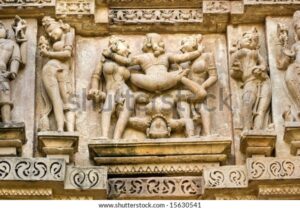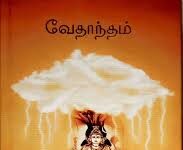
Dear Sir,
The sculptures in temples that depict sexual acts are incredibly unexpected and perplexing. What do they wish to convey? When you visit the temple, don’t you find yourself wandering about these sculptures? Then, how does one’s entire mind turn towards God? Might God also be lustful? Still, how does that account for the sculptures depicting three men and two women? Such sculptures can be found not only in the north but also in a very large temple in the south. I will send you a photo proof as soon as possible. There seems to be some great mystery between lust and our divine beliefs. What do you think?
Saravanakumar
Dear Saravanakumar,
The temples not only have sculptures of sex acts, but they also include a variety of sculptures that capture the wholeness of life. Hinduism does not have the practice of rejecting lust as sin. That is why there are sculptures depicting sexual scenes. Hinduism aims to establish a totality of life that considers all facets of existence. Lust is therefore accorded the same significance as renunciation.
These sculptures belong to two major traditions.
A. Ancient tribal life itself forms the foundation for the rituals performed to increase the fertility of the land (Vrishti Anushtana). They consider sex a symbolic representation of prosperity and fertility. They see it as tangible evidence of God’s play.
Thus, the Saura religion, which worshipped the Sun, had a large number of these sculptures. Later, when Saura united with Vaishnavism, these sculptures found their way into Vishnu temples.
B. Tantric religions view lust as a person’s inherent energy. (Mooladhara): These faiths held that the path to realizing the highest human truth is through comprehending and transcending that primordial energy. So they saw lust as a path to knowledge and liberation. Hence, the tantric traditions also developed sexual sculptures. These sculptures are found in Saiva and Shakta temples.
Hinduism is not a set of moral principles meant to lead a chaste and contemplative life. It has a sizable body of knowledge that numerous customs and beliefs have absorbed over time. It is a Hindu’s duty to fully understand that wisdom and base his entire life on it.
Simply pose a query. Simply pose a query. If there are no such sculptures, do you feel focused? Isn’t lust always raging in your mind? How many hours are there without lustful thoughts in your life that your mind fixes on something else?
Well, let’s say these images are sexually stimulating. Aren’t the women who visit the temple sexually stimulating? You could feel lustful just by looking at them, right? Why? Because even the scent of jasmine in the garden alone has the power to evoke a feeling of lust. Whether it is music or painting, the same sexual feeling could arise.
It is not possible to achieve a focused mind by tightly shutting out everything. The problem is in the mind, not the outside world. Shutting your eyes for a little while will naturally cause your mind to see images of lust that are thousands of times larger than those sculptures.
Believe that everything is God’s play; enter the temple without looking at it, and pray if you can. That is the path of devotion. Ninety percent of us do the same.
Knowing why is the way to get over it. That is the path of wisdom. The sense of wholeness we get from seeing everything as part of a larger structure ultimately frees us.
Jeyamohan
Translated By Anandkumar










